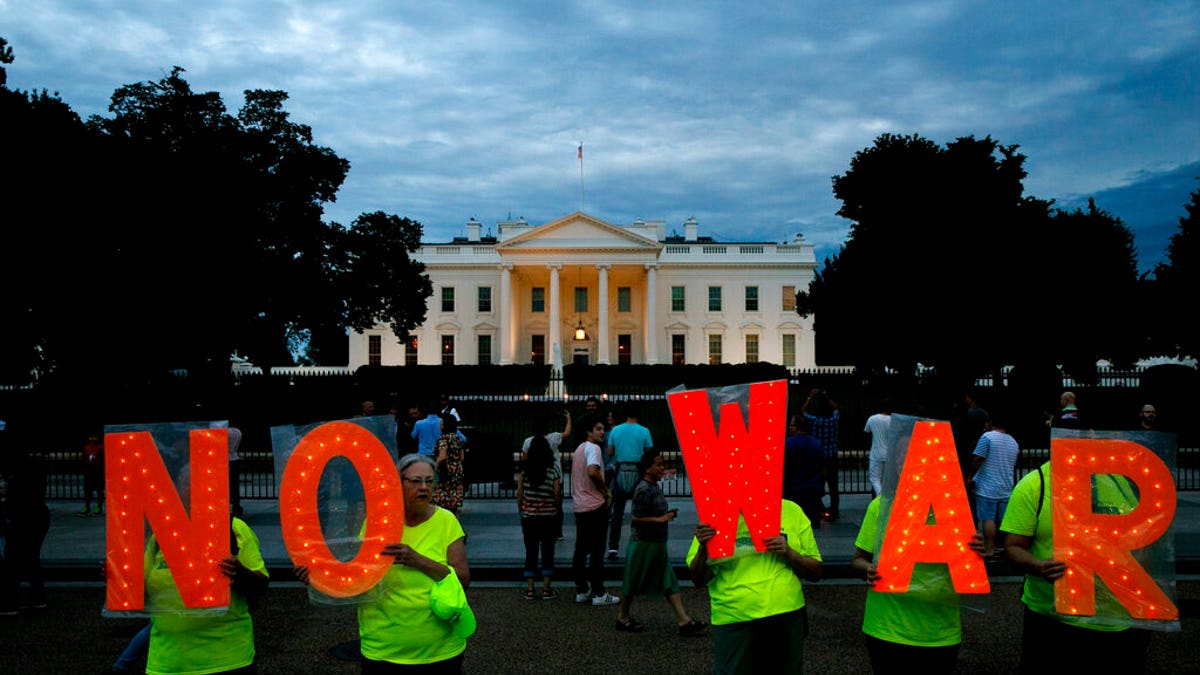Graham: Tensions with Iran are getting more dangerous by the day
Foreign Relations Committee member Sen. Lindsey Graham on the Trump administration's strategy to combat Iran aggression.
The U.S. may be closer to a military conflict with Iran now more than ever.
But this also means that Congress could be the closest it’s come in years to considering a new resolution to authorize the use of military force. Such a proposal could end the old authorizations Congress approved in 2001 to fight in Afghanistan and a 2002 blessing to invade Iraq. Three presidents, including President Trump, have employed these Authorizations for Use of Military Force (AUMFs) for a panoply of military interventions spanning nearly two decades.
The operations have gone beyond the scope of just Afghanistan and Iraq. The U.S. has used those AUMFs to deploy military might in the Philippines, Georgia, Yemen, Djibouti, Kenya, Ethiopia, Eritrea, Somalia and Niger. In fact, the House just approved a defense spending plan with a provision to extinguish the old AUMFs within 240 days of the measure becoming law.

Protesters hold signs spelling out, "No War," outside the White House, Thursday June 20, 2019, in Washington, after President Donald Trump tweeted that "Iran made a very big mistake" by shooting down a U.S. surveillance drone over the Strait of Hormuz in Iran. (AP)
Democratic leaders emphasized this point when summoned to the White House Situation Room Thursday afternoon for a briefing on Iran.
“We make it very clear that in order to get engaged in any military activities, we must have a new Authorization of Use of Military Force,” said House Speaker Nancy Pelosi, D-Calif. “That is clear in our caucus.”
When asked if members of the Trump Administration agree that the existing AUMFs lack rationale for attacking Iran, Pelosi replied “No. They didn’t say anything. They didn’t say yes. They didn’t say no.”
“We told the room that the Democratic position is that Congressional approval must be required before funding any conflict in Iran,” said Senate Minority Leader Chuck Schumer, D-N.Y. “One of the best ways to avoid bumbling into war - a war that nobody wants – is to have a robust, open debate and for Congress to have a real say. We learned that lesson in the run-up to the Iraq war.”
SITUATION ROOM BRIEFING ON IRAN CRISIS CONCLUDES, AS MCCONNELL SAYS 'MEASURED' RESPONSE IS COMING
That’s the fundamental difference here. The Administration of President George W. Bush made a concerted case in 2002 and 2003 that Iraq harbored weapons of mass destruction. In the shadow of 9/11, President Bush argued that the U.S. needed to strike Iraq pre-emptively to stave off a catastrophic terrorist attack. As it turned out, the U.S. relied on faulty intelligence to appeal to Congress and the public for war. Less than two years later, Congress concluded a post-mortem on the reasons given for seeking war. Sen. Pat Roberts, R-Kan., chaired the Senate Intelligence Committee at the time. Based on what lawmakers learned later, Roberts doubted that the Senate resolution to approve the Iraq war could garner the 77 Senate yeas it commanded in 2003.
This is why Congress has been reluctant to modify or refine the existing AUMFs – let alone adopt new ones. Lawmakers know they lack the votes to get everyone together to approve a modern AUMF. That would then leave any presidential administration one option: go it alone. And if an administration opts against acting? The U.S. could be vulnerable to attack and lack the appetite to initiate justified reprisals.
So, an administration could decide to send in military forces without a Congressional blessing. Sure, lawmakers may howl that the president is ignoring the Constitution. But at least Messrs. Bush, Obama and Trump can point to some Congressional, tacit endorsement of war: the 2001 and 2002 AUMFs.
Even if it is a stretch…
In other words, had the Bush Administration not leaned on defective information to start a war, lawmakers today may have more confidence in building a case for battle under the proper circumstances. But the Iraq experience was so onerous that many lawmakers lack the conviction to cobble together a coalition to either endorse or oppose the war option. Congress then reverts to relying on the old AUMFs. Lawmakers diminish their own power, ceding authority to the executive and incapacitated to legislate.
But no one is sure what is coming on Iran – if anything. The Trump Administration again finds itself at a familiar locus. It’s called the brink.
President Trump declared Thursday “you’ll soon find out” if the U.S. intends to strike Iran militarily.
Nearly two years ago, the President warned North Korea it had better shape up or Pyongyang would “be met with fire and fury like the world has never seen.”
It wasn’t that long ago that Trump was threatening to slap devastating tariffs on Mexico.
Democrats may demand an AUMF. But many Republican leaders are more than willing to defer to President Trump.
House Minority Leader Kevin McCarthy, R-Calif., said it was “unacceptable” for Iran to shoot down the American drone. But when asked what the U.S. should do to retaliate, McCarthy replied that “the President will have options before him.” When asked if the U.S. should use force, McCarthy said “I will leave that to the experts in the military and those in the intel community.” McCarthy reiterated that Trump “has the current authority” to wage war if necessary, based on the 2001 and 2002 AUMFs.
Senate Majority Leader Mitch McConnell, R-Ky., said that the Trump Administration should proceed with “measured responses.”
The Senate aims to begin debate next week on the annual defense policy bill. Sens. Tom Udall, D-N.M., and Tim Kaine, D-Va., have long implored their colleagues to trash the calcified AUMFs and draft something new. Udall and Kaine have prepped an amendment to the defense legislation which would require Congressional signoff before going to war with Iran.
Of course, this touches off the age-old question. What defines “going to war?” Congress has only formally “declared war” five times against 11 nations. The last such declaration was against Romania in 1942. But what constitutes “war?” If the U.S. bombs Iranian defense facilities or engages Iranian aircraft and ships at sea, is the U.S. “at war?” Was the U.S. “at war” in Niger when four American soldiers were killed in an ambush two years ago? Few Americans even knew the U.S. had forces in Niger. That’s why Democrats and some Republicans demand Congressional consent. If the U.S. is going to be involved somewhere and lawmakers are expected to foot the bill, they’d like to vote. That’s because Article I, Section 8 of the Constitution grants Congress the authority “to declare War.”
CLICK HERE TO GET THE FOX NEWS APP
And, if military action is unpopular politically or with the public, lawmakers always to know why an administration is involved militarily somewhere without Congressional imprimatur.
“I cannot really predict what actions the White House will take,” said Pelosi after returning to the Capitol following the White House briefing. “They did consult with us today.”
But consultation is different from the adoption of an AUMF or a declaration of war. And that’s something Democrats are demanding if President Trump decides to strike.






